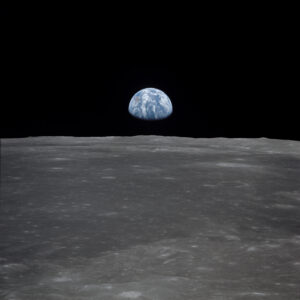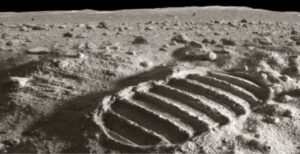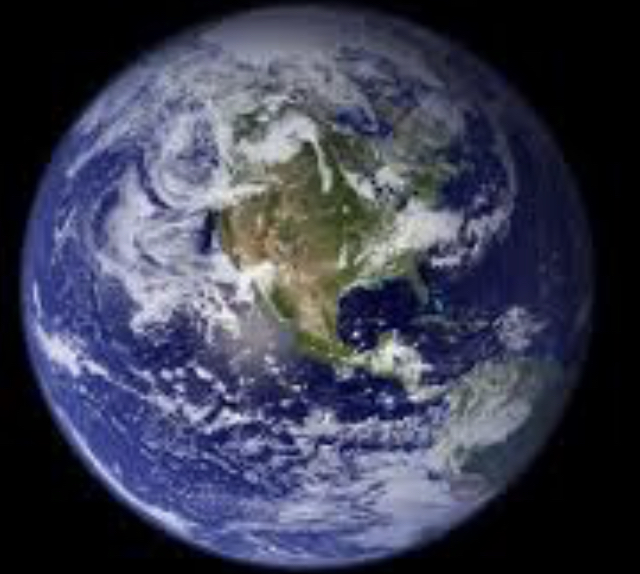 photo credit: nasa.gov
photo credit: nasa.gov
creationsciences.com
Short, quick, logical reads
with meaningful content.
The topic I want to discuss in this blog is a scientific theory and I want to be clear that this is a “theory!” Because something is a theory does not by any stretch of the imagination mean that the theory has been proven or that it is a scientific fact. However, it also does not mean it has been disproven using the scientific method. For information on the scientific method, please see my earlier blog titled “What is science anyway.”

The theory is that if the universe is billions of years old, as the Darwin theory of evolution would indicate, there should be an incredible amount of dust on the moon if certain calculations done by a scientist in 1960 were correct. Enough in fact that when the astronauts landed on the moon they should have been enveloped in dust. However, there were others’ calculations performed in 1993 which disagreed with the 1960 findings. There were some disagreements about what was included as dust and what elements were included in the dust among other variables.
Now, the blogs that I write are certainly not fit for a scientific journal nor are they based on pure science. I am guided by my faith in Christ, but I like to study topics of interest and try to approach these topics in an objective manner even though that approach may not meet the strict standards of the scientific method.

When I think about dust it just doesn’t make any sense to me that it is possible to accurately measure the amount of dust “scientifically.” I think about all of the variables that affect the amount of dust that might fall in any given area that is being measured. There is no wind on the moon, but there is solar activity that according to some authorities can affect the amount of dust that falls on the moon. Also, there is disagreement as to what size particles constitute dust.

As you can see there is disagreement regarding details concerning calculations about the rate of dust accumulation on the moon. Therefore, in cases such as this it’s my opinion that logic and reason are more reliable than dubious calculations. Therefore the way to settle this disagreement is to use logic and reason to arrive at an estimate that makes sense.
Since calculating the rate of dust accumulation on the moon is difficult, it seems better to use a quantifiable small measurement that can be known and work outward expanding the small known amount to the larger unknown quantity. For example, generally particles of dust have been estimated at approximately .3 microns (also known as a micrometer, one millionth of a meter) to 10 microns in size.
Anyone who doesn’t do daily house cleaning knows that in one week’s time a layer of dust accumulates. It takes 25,400 microns to equal one inch. Therefore, using a rational approach without all the professional jargon and caveats I will choose the .3 microns to represent the thickness of a layer of dust that can accumulate in one week. Therefore, dividing one inch thickness of dust (25,400 microns equals one inch) by .3 microns (thickness of particles of dust accumulated in one week estimated at .3 microns) yields 84,667 weeks or 1,628 years to accumulate one inch of dust. If say there are 3 inches of dust on the moon using the earth’s estimated rate would yield and age of 4,885 years. Obviously this is not a scientific estimate, but it is a rational way to arrive at an estimate that is just as valid as some scientific guesstimate without all the fancy jargon.

Now, it is critical that I state emphatically this is not a scientific analysis. It is merely an amateur’s effort to use a simple easy to understand rationale for arriving at a ballpark estimate for dust accumulation and using this estimate to make a ballpark estimate of the age of the universe. Are there flaws … of course! Any attempt to try and estimate dust accumulation is suspect at best. I used the smallest amount for the dust accumulation in one week as this would produce the largest estimate and avoid criticism that I was trying to make the estimate of years low. Instead of using one of the lowest found estimates of .3 microns, had I used .03 microns this would have resulted in an estimate of 48,000+ years. Had I used .003 microns this would have resulted in an estimate of 488,000+ years. And had I used .00003 microns, the estimate would have been just shy of 49,000,000 years. As anyone can see, billions of years does not seem to be a reasonable estimate.
I am interested in your opinion on this topic. Please leave your comments below. Whether you agree or not I’d like to know what your reasoning is for your opinion. Thanks for stopping by.

Disclosure: This website contains quick links to affiliates. If you follow a link on this website and purchase something, we will in most instances, receive a small commission which will not increase the cost of the purchase. The merchant links presented on this site will help ensure I can continue shedding light on important topics. The blogs that I do are a result of compiling information gathered from sources considered reliable and of course the Bible which is totally reliable.
Thank you.

